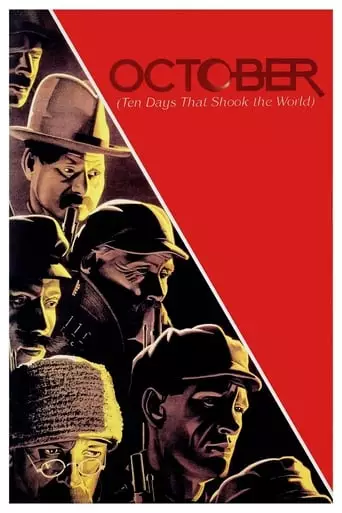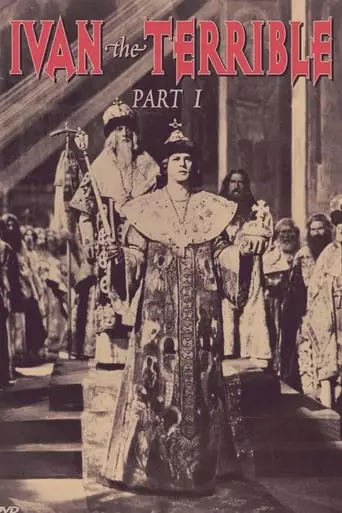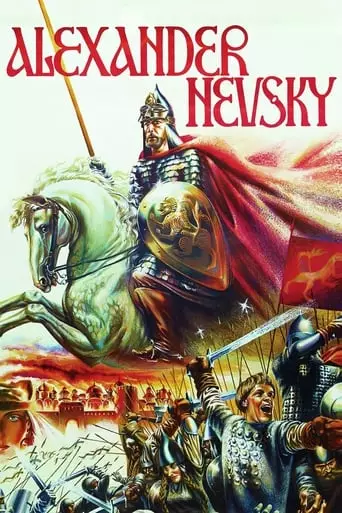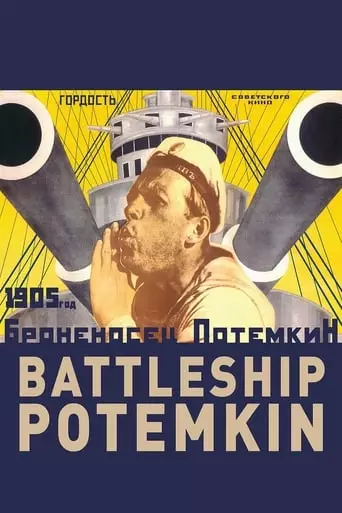Sergei M. Eisenstein’s docu-drama about the 1917 October Revolution in Russia. Made ten years after the events and edited in Eisenstein’s ‘Soviet Montage’ style, it re-enacts in celebratory terms several […]

Sergei M. Eisenstein’s docu-drama about the 1917 October Revolution in Russia. Made ten years after the events and edited in Eisenstein’s ‘Soviet Montage’ style, it re-enacts in celebratory terms several […]

Set during the early part of his reign, Ivan faces betrayal from the aristocracy and even his closest friends as he seeks to unite the Russian people. Sergei Eisenstein’s final […]

Workers in a factory in pre-revolutionary Russia go on strike and are met by violent suppression. Directed by Sergei Eisenstein, Strike (Russian: Stachka) is a seminal Soviet silent film that […]

When German knights invade Russia, Prince Alexander Nevsky must rally his people to resist the formidable force. After the Teutonic soldiers take over an eastern Russian city, Alexander stages his […]

A dramatized account of a great Russian naval mutiny and a resultant public demonstration, showing support, which brought on a police massacre. The film had an incredible impact on the […]
Sergei M. Eisenstein: The Pioneer of Montage and Revolutionary Cinema
Sergei M. Eisenstein, one of the most influential filmmakers in cinema history, was a Soviet director and film theorist renowned for his innovative use of montage. His groundbreaking works, such as Battleship Potemkin (1925) and October: Ten Days That Shook the World (1928), not only revolutionized film editing but also established cinema as a powerful medium for political and artistic expression. Eisenstein’s contributions to film theory and practice have left an enduring legacy, influencing countless filmmakers and shaping the language of cinema.
Early Life and Education
Sergei Mikhailovich Eisenstein was born on January 22, 1898, in Riga, Latvia, then part of the Russian Empire. The son of a civil engineer, Eisenstein initially followed in his father’s footsteps by studying architecture and engineering in Petrograd (now St. Petersburg). However, the Russian Revolution of 1917 profoundly impacted his life and artistic trajectory. He became involved in the revolutionary movement and turned his attention to the arts, joining the Red Army’s theater division.
Eisenstein’s early experiences in theater, particularly his work as a set designer and director, shaped his understanding of visual composition and storytelling. These skills would later become integral to his approach to filmmaking.
The Birth of Montage: Strike and Battleship Potemkin
Eisenstein’s directorial debut, Strike (1925), showcased his revolutionary approach to filmmaking. The film depicted a factory strike and its brutal suppression, using dynamic editing techniques to create emotional and intellectual impact. Eisenstein’s use of montage—juxtaposing disparate images to generate meaning and evoke emotion—was a defining feature of his work.
Battleship Potemkin (1925): Eisenstein’s second film, Battleship Potemkin, is widely regarded as one of the greatest films of all time. The film dramatizes the 1905 mutiny aboard the Russian battleship Potemkin and the subsequent uprising in Odessa. Its iconic “Odessa Steps” sequence, in which soldiers massacre civilians on a grand staircase, remains one of the most studied and celebrated scenes in cinema history. The sequence’s rhythmic editing, emotional intensity, and symbolic imagery exemplify Eisenstein’s mastery of montage.
Eisenstein viewed montage not merely as a tool for storytelling but as a means of intellectual engagement. By juxtaposing images, he sought to provoke audiences to draw connections and engage with the film’s themes on a deeper level.
Revolutionary Cinema: October and The General Line
Eisenstein’s films often served as propaganda for the Soviet government, reflecting the ideals of the Russian Revolution and the Communist Party. However, they were also complex works of art that pushed the boundaries of cinematic language.
October: Ten Days That Shook the World (1928): Commissioned to commemorate the tenth anniversary of the Bolshevik Revolution, October is a sprawling and ambitious depiction of the events leading to the overthrow of the Provisional Government. The film’s experimental editing and symbolic imagery underscore Eisenstein’s belief in cinema as a tool for ideological education.
The General Line (1929): Also known as Old and New, this film celebrates the collectivization of agriculture in the Soviet Union. While less well-known than Battleship Potemkin or October, it showcases Eisenstein’s ability to combine visual poetry with political messaging.
Challenges and Later Career
Eisenstein’s later career was marked by creative challenges and political pressures. His ambitious projects often clashed with the demands of Soviet authorities, who sought greater control over artistic expression.
¡Que Viva México!: In the early 1930s, Eisenstein traveled to Mexico to shoot a film celebrating Mexican culture and history. However, the project was plagued by financial difficulties and political interference, and it was never completed in its intended form. The surviving footage, later compiled into various versions, reveals Eisenstein’s continued experimentation with visual storytelling.
Alexander Nevsky (1938): A historical epic about the 13th-century Russian hero who defended his homeland against the Teutonic Knights, Alexander Nevsky marked Eisenstein’s return to Soviet cinema. The film’s rousing score, composed by Sergei Prokofiev, and its dramatic battle sequences made it a critical and popular success.
Ivan the Terrible (1944–1946): This two-part historical drama about the controversial Russian tsar was Eisenstein’s final major work. While the first part was praised for its grandeur and psychological depth, the second part was criticized by Soviet authorities for its perceived ambiguity and subversive elements. Plans for a third installment were abandoned after Eisenstein fell out of favor with the government.
Film Theory and Legacy
In addition to his work as a director, Eisenstein was a prolific writer and theorist. His essays on montage, including concepts like “intellectual montage” and “dialectical montage,” have become foundational texts in film studies. Eisenstein believed that editing was the essence of cinema, capable of shaping meaning and eliciting powerful emotional responses.
Eisenstein’s influence extends far beyond the Soviet Union. Filmmakers such as Alfred Hitchcock, Orson Welles, and Martin Scorsese have cited his work as an inspiration. His innovative techniques continue to be studied and celebrated in film schools and by cinephiles around the world.
Death and Posthumous Recognition
Sergei Eisenstein died of a heart attack on February 11, 1948, in Moscow at the age of 50. Despite the political challenges he faced during his lifetime, his contributions to cinema have been universally recognized. His films, particularly Battleship Potemkin, remain enduring masterpieces that exemplify the power of film as both an art form and a medium for social change.
Conclusion
Sergei M. Eisenstein was a visionary filmmaker whose innovations in montage and visual storytelling transformed cinema. His ability to combine art and ideology created films that are not only politically resonant but also aesthetically groundbreaking. As a pioneer of cinematic language, Eisenstein’s legacy endures as a testament to the transformative potential of film.